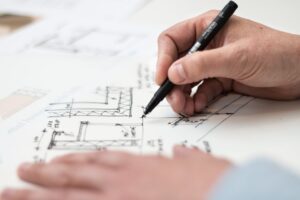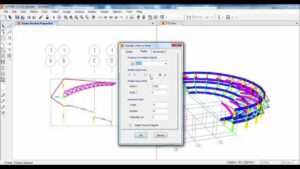The Ways in Which AutoCAD Shortcuts Can Help You Accelerate Your Workflow

The Ways in Which AutoCAD Shortcuts Can Help You Accelerate Your Workflow
If you depend exclusively on the menus and toolbars, AutoCAD may be one of the most time-consuming design tools accessible; but, it is also one of the most powerful design tools available. When it comes to working more quickly in AutoCAD, professionals are aware that the key to success rests in the use of keyboard shortcuts. You will be able to save hours on tasks and enhance accuracy if you memorize a few instructions and then customize them to your own preferences.
The Importance of Taking Shortcuts
The time you spend scrolling through menus adds up to a significant amount. Cuts and shortcuts enable you to:
- Commands may be executed immediately without the need to navigate toolbars.
- Concentrate more on the design process and less on the quest for tools.
- Ensure that the process is uninterrupted and free of disruptions at all times.
- Raise your level of productivity while working on tasks that are either vast or difficult.
- Understanding how to use shortcuts is an absolute must for everyone who is serious about AutoCAD.
AutoCAD Shortcuts That Are Absolutely Necessary for Every User to Know
Listed below are some of the most often used shortcuts that can bring about an instant increase in your productivity:
- L stands for “Line.”
- C – The Circle
- Rectangle is abbreviated as REC.
- Polyline is abbreviated as PL.
- TR stands for trim.
- EX for “Extend”
- M stands for “move.”
- COPY – Copied
- RO stands for “rotate.”
- A – Offset (O)
- MI stands for “mirror.”
- E stands for erase.
- Zoom in using a Z.
- – Hatch, or H
Everything you need for day-to-day usage is included in them, including sketching, editing, and navigation.
The Use of Shortcut Combinations to Accelerate the Editing Process
When utilized in succession, shortcuts become much more potent than they already are:
- Trims several items in a short amount of time without picking boundaries by pressing TR and entering twice.
- Copy is automatically repeated when you press the CO key and the space bar.
- The combination of ESC and Command swiftly terminates a command and initiates a new one.
- As is the case with other apps, you may undo and redo activities by pressing CTRL + Z or CTRL + Y.
- By being familiar with these combinations, you can cut down on clicks that aren’t essential and keep your hands on the keyboard.
Utilizing the Command Line to Improve Productivity
In AutoCAD, the command line is the most important part of the shortcuts. Instead of clicking icons, it is substantially quicker to type instructions such as L, TR, or DIM straight into the keyboard. As you continue to utilize it, it will eventually seem more natural to you. In addition, you may use the space bar to repeat the command that you just executed, which is one of the most efficient ways to save time.
Incorporating Your Own Personal Shortcuts
Customization is one of the features that AutoCAD has. You are able to:
- To set your own shortcut keys, you may make use of the CUI editor, which stands for “Customize User Interface.”
- Make shorter keystrokes for instructions that are only used seldom.
- Make use of aliases, such as entering X for Explode, to reduce the amount of work required.
- Customizing shortcuts to your workflow guarantees that you are not constrained by the parameters that are specified by default.
Keyboard shortcuts that go beyond commands
Besides the sketching tools, you need also remember the shortcuts for the system and the controls:
- You may save your work by pressing CTRL and S.
- You may plot or print by using CTRL and P.
- A shortcut to switch between open drawings is CTRL + TAB.
- Using the shortcut CTRL + SHIFT + S, you may save fresh versions.
- Choose all of the items in a drawing by pressing CTRL and A.
Using these global shortcuts helps keep projects structured and reduces the number of interruptions that occur.
Utilizing Shortcuts in conjunction with Mouse Actions
- The combination of shortcuts and mouse techniques results in an even greater level of efficiency:
- To zoom in to the entire extent of your drawing, right-click the middle mouse wheel and then double-click it.
- If you want to pan swiftly, hold down the middle mouse wheel.
- In order to make modifications more quickly, use the right-click menus in conjunction with commands.
- A streamlined workflow is produced by the combination of the keyboard and the mouse.
Maximizing the effectiveness of shortcuts
In order to get the full benefits, include shortcuts into your everyday routine:
- Confront yourself with the challenge of completing activities without making use of the toolbar.
- Get a shortcut cheat sheet printed up and put it close to where you currently work.
- One additional shortcut should be added every week until it becomes as natural as breathing.
- Similar to touch typing, with repeated practice, both speed and accuracy may be improved.
One of the easiest and most effective methods to speed up your productivity is to get proficient in the shortcuts that are available in AutoCAD. You will be able to reduce the amount of time that is lost and concentrate on what is genuinely important, which is design, if you depend on the command line, personalize your own key aliases, and combine shortcuts with intelligent mouse use.







